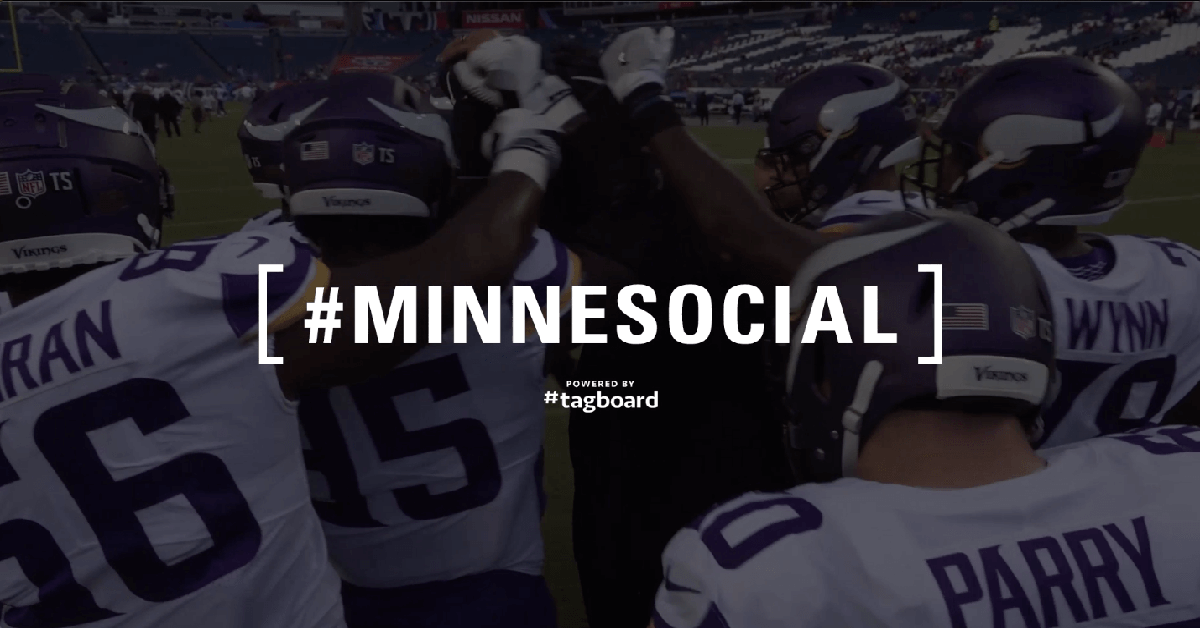In sports, some games are naturally going to attract a larger audience than others. Whether it’s because of the matchup, time of the year, team performance, or various other factors, we’ve all been a part of games that either draw out the entire fanbase, or struggle to get half to tune in. Traditionally, the fourth NFL preseason game tends to fall in the second category since the starters barely play and the outcome doesn’t have much of an effect on the rest of the season.
With much lower interest than normal, teams often struggle to attract a large crowd at the stadium or high viewership on the broadcast. So how would you go about trying to combat this? Well, Scott Kegley, Executive Director of Digital Media & Innovation for the Minnesota Vikings, Skip Kreuger, Director of Broadcasting, and the entire Vikings staff seem to have cracked the code in their second annual #Minnesocial game this past season. As a way to entice fans to tune in, the Vikings completely transformed their broadcast into a socially-driven interactive experience.
#Minnesocial 2018 Recap — Powered by Tagboard
By fielding live questions and showcasing content from around the world, they made fans an integral part of the conversation on air, and it’s something we can all learn a great deal from. Whether you’re producing a national broadcast or a local digital show, these quick tips to make your broadcast more interactive will help you drive awareness, expand your audience, and take your storytelling to the next level.
Start a United Conversation
The first step to creating an interactive broadcast is to unite the conversation through a clear call to action on the broadcast and through your own social channels. You need an easy way to discover content from your audience, and your audience needs to know how to participate.
The Vikings did a great job of promoting #Minnesocial as their primary call to action leading up to the game on social, and throughout the broadcast both out loud and present on the ticker/heatmap visualizations. The ticker — a feed of social content along the bottom of the screen — provided an easy medium to scroll through social chatter and interlace call-to-action graphics during the game, while the heatmap — showcasing where social posts were coming from across the globe — gave The Vikings the opportunity to ask where fans were tuning in from and showcase the global reach of their team brand.
Let Viewers Drive the Conversation
How many times have you been watching a game or show and wanted to ask the announcers about something that just happened or wanted to hear their opinion on something else? Chances are other viewers have the same questions too, and if the broadcast isn’t built interactive, they’re going to miss out on valuable content that the viewers want to see and hear.
However, if you’re running an interactive broadcast and using a platform like Tagboard, you can seamlessly integrate these questions to let your audience drive the conversation on air keeping them interested and tuned in for longer. Throughout this year’s #Minnesocial broadcast, the Vikings team made these questions a focal point of the commentary pulling in tweets for both Paul Allen, Voice of the Vikings, in the booth and for Vikings General Manager, Rick Spielman.
“It makes the broadcast more interesting to fans when they can participate in it. They’re able to see their posts on air; they’re able to feel like they’re having a conversation with the general manager on air. That’s pretty rare, and it makes the whole broadcast more engaging”
– Scott Kegley, Executive Director, Digital Media & Innovation
Simple additions to the broadcast like this instantly make it more enticing for fans and transform the whole production into a two-way conversation where viewers feel like they’re actually a part of the show. At the same time, it also allows you to have a little fun!
Add Personality to Your Story
In a traditional broadcast, you’ll typically only see the story unfold through the lens of the broadcast cameras; a few different perspectives. But what about the fan’s perspective around the stadium? What about the view from the team sideline? In today’s day and age, everyone has a camera in their pocket, and everyone has a slightly different story to tell, so why not combine it all?
By leveraging user-generated content (UGC) from fans at the stadium and content produced by the digital team on the sidelines, the Vikings added a new layer to how they told the story of the game; they gave it personality.
In the end, viewers just want to be entertained while they watch. By uniting the conversation, letting the viewers drive the commentary, and adding this new level of personalization, you can create an entirely new interactive broadcast that does just that.
